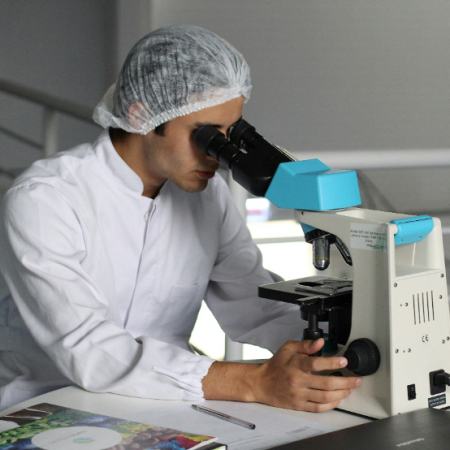With the rapid advancement of artificial intelligence (AI) technology in recent years, the healthcare industry is undergoing an unprecedented transformation. Driven by AI, emerging applications such as intelligent medical imaging recognition, smart diagnostics, personalized treatment, and telemedicine are continuously emerging. These new technologies have significantly improved diagnostic and treatment outcomes, providing patients with a better health management experience. At the same time, AI technology can also help doctors better address global challenges such as shortages of medical resources and chronic disease management, thereby promoting the upgrading and optimization of the global healthcare system. From early disease diagnosis to the development of personalized treatment plans, AI is permeating every aspect of medical services and beginning to redefine medical processes and patient experiences.
Image Recognition and Analysis: New Applications of AI in Medical Imaging
Medical imaging stands as one of the pivotal tools in modern medical diagnostics, playing a crucial role in the early detection and diagnosis of conditions such as cancer, heart disease, and cerebrovascular diseases. Traditionally, physicians have relied on their knowledge and experience to analyze medical images derived from various modalities including X-rays, Digital Radiography (DR), Computed Tomography (CT), Positron Emission Tomography (PET), and Magnetic Resonance Imaging (MRI), in search of potential lesions or abnormalities. However, due to the complexity of the images and the high demand for detail, manual analysis is inevitably subject to individual subjective factors, leading to potential misdiagnoses or missed diagnoses. It is within this context that AI technology, particularly its image recognition capabilities within multimodal applications, has demonstrated significant potential.

The application of AI in medical imaging is predominantly based on deep learning algorithms, particularly Convolutional Neural Networks (CNNs). These technologies are capable of identifying and classifying subtle changes within images by learning from vast amounts of medical imaging data, thereby enabling more efficient and accurate analysis compared to traditional methods.
Enhancing Diagnostic Accuracy
AI, through deep learning models, can extract valuable features from vast amounts of medical imaging data and conducting comprehensive analyses. These models are trained on extensive datasets of manually annotated and corrected images, learning to identify characteristics of various diseases such as tumors, vascular stenosis, and cerebral hemorrhages. In the process of analysis, AI not only accurately detects abnormal changes in the images but also provides diagnostic recommendations, assisting physicians in making more precise judgments.
For instance, in lung cancer screening, AI can automatically identify the likelihood of tumor presence through CT scan images and analyze the tumor's size, shape, and location. This information is crucial for cancer detection, enabling doctors to identify risks at an early, treatable stage when the lesion is still small, thereby significantly improving the cure rate.
Automating Diagnostic Processes
AI technology not only enhances the accuracy of diagnoses but also significantly improves diagnostic efficiency. Traditional medical imaging analysis typically requires doctors to meticulously examine each image, a process that is both cumbersome and time-consuming. In contrast, AI systems can automatically analyze thousands of images within seconds, assisting doctors in quickly identifying potentially problematic images and thereby shortening the diagnostic cycle. This automated image recognition and analysis workflow not only alleviates the workload on physicians but also boosts the overall efficiency of the healthcare system.
For instance, in the diagnosis of heart disease, AI can automatically assess the degree of coronary artery stenosis by analyzing cardiac CT images, providing doctors with precise diagnostic references and reducing the risk of missed or incorrect diagnoses. Furthermore, AI can help identify potential risks of other complications in heart disease patients, offering crucial insights for subsequent treatment.
Early Disease Detection and Prevention
The potential of AI in early disease detection and prevention is particularly remarkable. Through continuous monitoring and analysis of medical imaging, AI can identify subtle changes and detect potential health issues even before clinical symptoms manifest. For instance, in the analysis of brain imaging, AI can detect minor brain lesions that may indicate early signs of Alzheimer's disease or Parkinson's disease, offering patients an opportunity for earlier intervention. Early detection means that more timely and effective treatment measures can be implemented, significantly improving cure rates or slowing disease progression.
Moreover, AI technology holds a unique advantage in long-term monitoring. As patients' imaging data accumulates, AI systems can automatically compare and analyze historical images, detecting subtle differences in the patient's imaging over various periods. This capability provides physicians with trend analysis and early warnings, enabling them to adjust treatment plans promptly and prevent the progression of diseases.

Global Collaboration and Remote Medical Consultations
Another significant advantage of AI technology lies in its capacity for interdisciplinary collaboration and global sharing. By establishing a global medical imaging database, AI can learn from medical imaging data across different regions, populations, and clinical conditions. This not only enriches AI's learning models but also enhances the precision and universality of AI-driven medical imaging analysis on a global scale.
Through collaborations with large hospitals, community clinics, and research institutions, AI systems can continuously update and refine their diagnostic models, thereby improving diagnostic accuracy and applicability. This global sharing model is particularly crucial for extending equitable medical services to remote areas with relatively limited healthcare resources. By leveraging remote diagnostics and AI support, physicians can utilize global medical imaging data to compensate for local resource shortages, providing high-quality medical services to a broader patient base. This approach enables more people to benefit from the convenience of modern healthcare at a lower cost.
Conclusion
The novel application of AI in medical imaging recognition and analysis has significantly enhanced the accuracy of disease detection, greatly improved healthcare efficiency, and brought hope to a greater number of patients. As technology continues to evolve, AI is poised to become an indispensable component of the future medical diagnostic process. Although AI cannot yet fully replace the final professional judgment of physicians and still faces some acute technical and ethical challenges during its development, it is already capable of gradually relieving doctors from the routine and tedious tasks of basic analysis, aiding them in swiftly and accurately identifying and locating potential health risks in patients. In the near future, the deep integration of AI technology with medical imaging has the potential to fundamentally transform traditional disease diagnosis methods, making disease screening and treatment more precise and efficient.





